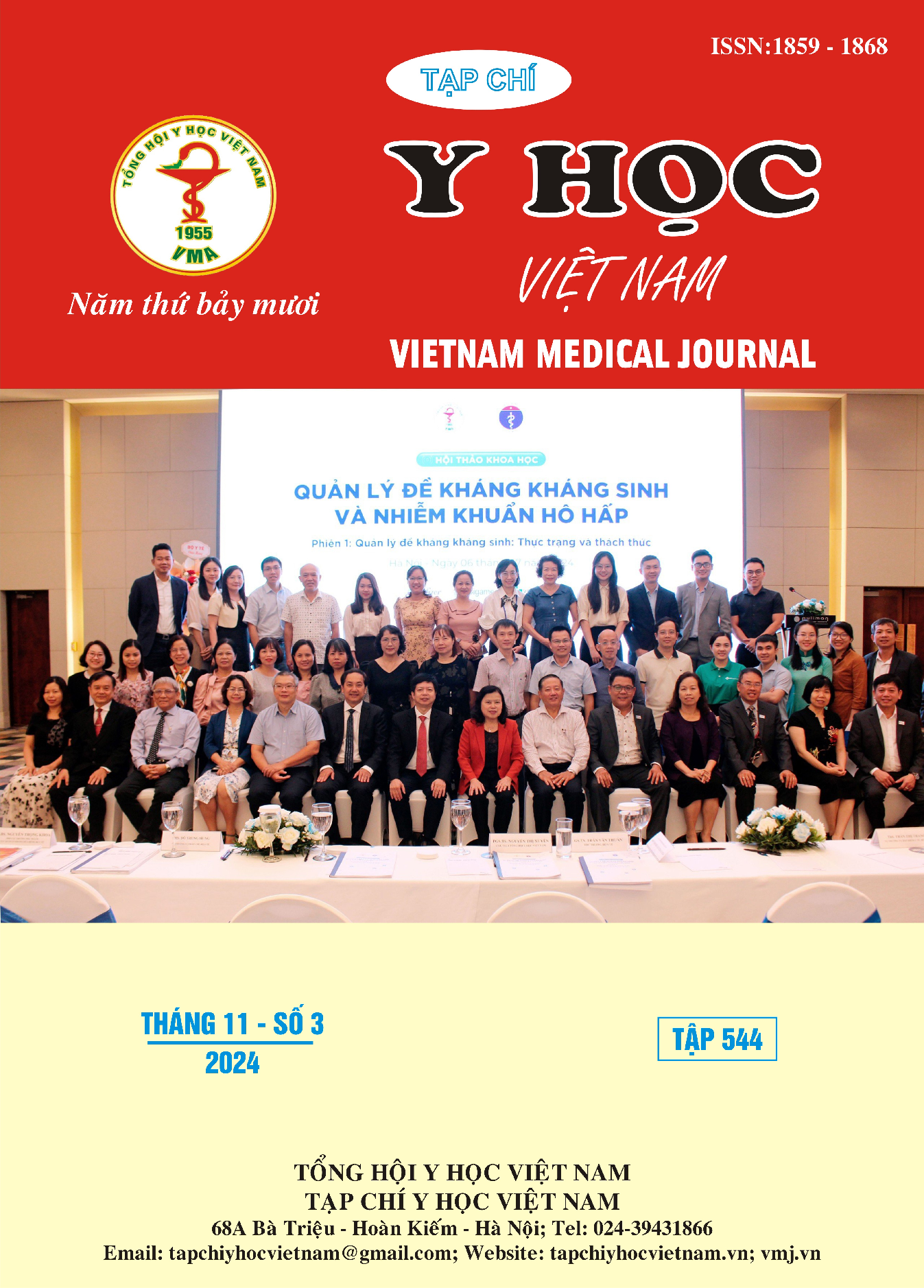CHARACTERISTICS OF METABOLIC SYNDROME IN WOMEN PRIMARY OSTEOPOROSIS
Main Article Content
Abstract
Object: Metabolic syndrome and osteoporosis are two common conditions that receive little attention in postmenopausal women. These conditions are often only detected when serious complications, such as cardiovascular events and fractures, have occurred. Objective: To determine the prevalence of metabolic syndrome and assess some related factors in women with primary osteoporosis. Subjects and Methods: A descriptive, cross-sectional study was conducted on 99 postmenopausal female patients diagnosed with primary osteoporosis who visited or were treated at Bach Mai Hospital and Hanoi Medical University Hospital from August 2023 to August 2024. Results: The prevalence of metabolic syndrome in postmenopausal women with primary osteoporosis is 52.5%, with elevated glucose being the most common (57.6%). Overweight, obese, or physically inactive individuals have a higher risk of developing metabolic syndrome, 4.8 and 3.9 times higher, respectively (OR = 4.8; 3.9). No association was found between total calcium levels, vitamin D3, T-score at the femoral neck, and lumbar spine between the groups with and without metabolic syndrome (p > 0.05). However, there is a positive correlation between increased waist circumference and T-score at the femoral neck and lumbar spine (p < 0.05). Conclusion: The prevalence of metabolic syndrome in women diagnosed with primary osteoporosis is quite high, with elevated glucose being the most common factor. Overweight, obesity, or physical inactivity increase the risk of metabolic syndrome. Increased waist circumference is associated with higher bone density. Identifying and understanding the relationship between metabolic syndrome and osteoporosis is crucial for developing effective prevention and treatment strategies.
Article Details
Keywords
metabolic syndrome, Primary osteoporosis.
References
2. Phạm Ngọc Oanh, Phan Thanh Tâm, Văn Thái Minh và cộng sự. (2019). Hội chứng chuyển hóa và các yếu tố nguy cơ ở người trưởng thành tại thành phố Hồ Chí Minh năm 2019.
3. Ngô Tuấn Anh, Cao Thanh Ngọc, Bùi Đăng Khoa. (2023). Mối liên quan giữa hội chứng chuyển hóa và loãng xương ở người cao tuổi. Accessed June 20, 2023. https://tapchiy hocvietnam.vn/index.php/vmj/article/view/5182/4733
4. Loke SS, Chang HW, Li WC. Association between metabolic syndrome and bone mineral density in a Taiwanese elderly population. J Bone Miner Metab. 2018;36(2):200-208. doi:10.1007/ s00774-017-0826-7
5. Hồ Thị Kim Thanh (2010). Tỷ lệ mắc và các yếu tố liên quan của hội chứng chuyển hóa một quần thể người cao tuổi Việt Nam. Thư viện Đại Học Y. Accessed August 7, 2024.
6. Yasein N, Shroukh W, Hijjawi R. Serum vitamin D and the metabolic syndrome among osteoporotic postmenopausal female patients of a family practice clinic in Jordan. Adv Clin Exp Med. 2015;24(2):245-250. doi:10.17219/acem/41375
7. Baek JH, Jin SM, Bae JC, et al. Serum Calcium and the Risk of Incident Metabolic Syndrome: A 4.3-Year Retrospective Longitudinal Study. Diabetes Metab J. 2017;41(1):60-68. doi:10. 4093/dmj.2017.41.1.60
8. Chen JM, Wu TY, Wu YF, et al. Association of the serum calcium level with metabolic syndrome and its components among adults in Taiwan. Arch Endocrinol Metab. 2023;67(5):e000632. doi:10. 20945/2359-3997000000632
9. Kim SH, Kim J. The Relationship between Risk Factors for Metabolic Syndrome and Bone Mineral Density in Menopausal Korean Women. Iran J Public Health. 2019;48(6):1025-1032.
10. Wong SK, Chin KY, Suhaimi FH, et al. The Relationship between Metabolic Syndrome and Osteoporosis: A Review. Nutrients. 2016;8(6): 347. doi:10.3390/nu8060347


